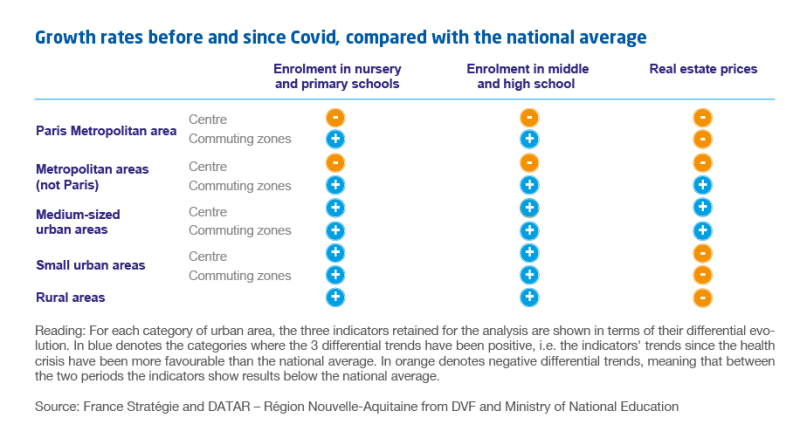
Results are in line with previous findings. While there have been no major upheavals in France's territorial structures, the indicators selected suggest some signs of a slowdown in the centres of metropolitan areas. At the same time, commuting zones surrounding metropolitan areas and medium-sized towns show growth rates above the national average. Small towns and rural communities are also improving, although the rise in real estate prices is still lower than the national average.
However, beyond these few consistencies, diversity prevails. Throughout metropolitan France, functional urban areas in each category can be found that present either more favorable or less favorable trends than the average. An unusual geography therefore emerges, seemingly not stemming from an accentuation of past trajectories.
Two detailed overviews confirm this diversity, before and after the Covid crisis. In medium-sized cities, for example, we observe twice as many positive changes as negative ones. However, the comparison of these trends with pre-crisis trajectories reveals any clear continuity or break. Likewise, in the already attractive Nouvelle-Aquitaine region, there are no identifiable macro-territorial regularities between a prosperous coastal region and a less-developed eastern region. Notable changes are nonetheless apparent in specific locations, with some indicators showing a significant decline (e.g. the core areas of La Rochelle or Villeneuve-sur-Lot) or a substantial increase (e.g. the commuting zones sourrounding Loudun or Montpon-Ménestérol). These localised variations and signs do not constitute a generalised urban exodus.

[1] This paper is a continuation of Bouvart C., Frocrain P., Rais Assa C. and Gomel C. (2022), "La revanche des villes moyennes, vraiment?", Analysis Paper, No. 106, France Stratégie, January.






